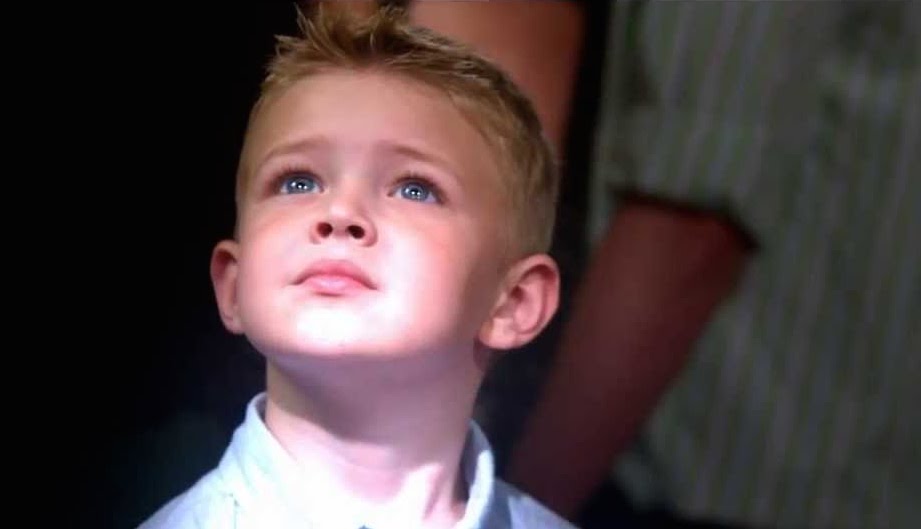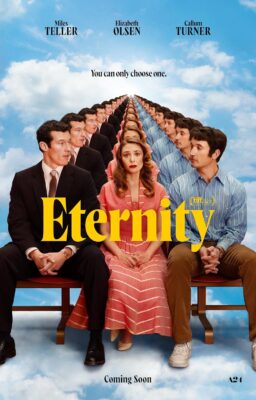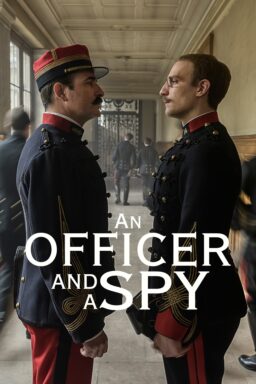“Let us build a house
where love can dwell
And all can safely live,
A place where
saints and children tell
How hearts learn to forgive.”
These opening words to Marty Haugen’s popular 1989 hymn “All Are Welcome” were sung numerous times at the Catholic Church of my youth. It was only in retrospect that I realized just how deeply they represented my own beliefs about religion, which transcend all theological boundaries. The spirit of the refrain, “All are welcome in this place,” echoed throughout the congregation led by Father Robert Sherry, one of the kindest men I’ve ever known, and an embodiment of the human capacity for benevolence. People left church feeling not only rejuvenated and inspired, but more connected to one another. Barriers that were societally imposed began to dissolve, allowing attendees to acknowledge their identity as members in the collective “family of man,” a term that also happens to be the title of Edward Steichen’s 1955 photography exhibition, juxtaposing images of people around the world united by their shared humanity. It’s an epiphany both simple and profound, and I’ve experienced it many places, though never more potently than in a movie theater.
At its highest level, cinema can serve as a religious experience. It can strengthen our spiritual connection to the world around us while bringing us closer to life’s mysteries, illuminating what would otherwise be intangible. Countless great artworks have been fueled by the faith of their creators, and film history has no shortage of them. Yet what separates art from mere propaganda? The answer is suggested in Roger Ebert’s oft-quoted line, “It’s not what a movie is about, it’s how it is about it.” I’ve often found that the most powerful films are also the most personal, regardless of their subject matter. It’s impossible to make a definitive film about Jesus Christ (for who can say what went on in His head?), but it is possible to make a film about how one relates to Jesus, thus making His journey resonate on a human level. Mel Gibson conveyed the physical toll of Jesus’ sacrifice in “The Passion of the Christ,” while Martin Scorsese examined the psychological toll in “The Last Temptation of Christ,” yet the true subject of these pictures were Gibson and Scorsese, respectively.
In 2014, several films targeting evangelical Christians were screened in theaters located not in big cities but small towns and suburbs. The most successful of these pictures were Harold Cronk’s “God’s Not Dead,” a film budgeted at $2 million that managed to gross upwards of $62 million, and Randall Wallace’s “Heaven Is For Real,” a $12 million Sony Pictures release that grossed just over $100 million worldwide. The titles for these films read more like declarative statements, and were shunned by most viewers outside of their target audience, yet their box office returns are indicative of a hunger for movies catering to a spiritually convicted crowd routinely ignored by Hollywood. Faith has all too often been deemed a four-letter-word by Hollywood executives intent on reaching the widest possible audience. The highest domestic gross of any spiritually themed film last year was Darren Aronofsky’s “Noah” (at $101.2 million), a flawed but fascinating retelling of the immortal tale, bolstered by fine performances and a script that tapped into universal themes of uncertainty and conflicted identity. Many evangelicals criticized the film for not adhering to strict biblical accuracy and it’s clear that Aronofsky had opted to take a more impressionistic approach with the material, as evidenced by the film’s disclaimer regarding artistic license.

Watching last year’s two evangelical hits, I was struck by just how much they differed from one another. Cronk’s film is, in many ways, a response to various legal cases alleging discrimination of college students on the basis of their Christian beliefs. These cases are listed in the end credits and are followed by a plug for the conservative nonprofit group, Alliance Defending Freedom, urging viewers to contact them if they feel their faith is being challenged by others. According to a featurette included on the film’s DVD release, many of the students were shunned because they refused to endorse the rights of same sex couples. The conspicuous lack of this topical controversy in “God’s Not Dead” suggests that the filmmakers were uneasy with their own subject matter and opted instead to stage a straightforward morality play. The Christians who commit their lives to Christ are depicted as pure-hearted underdogs. Practically everyone else is a reduced to a hateful caricature with an invalid worldview. Even the worst of them secretly yearn to follow Jesus, especially once they’ve been hit by a car.
Kevin Sorbo oozes malevolence as Professor Radisson, an atheist who orders his philosophy students to proclaim, “God is dead,” or face certain failure. Plucky freshman Josh (Shane Harper) refuses, citing himself as a Christian. Radisson then challenges him to prove the existence of God in presentations that he will deliver at the end of each class. What follows could’ve been an intriguing inverse of “Inherit the Wind,” as Josh utilizes the words of various philosophers to defend the existence of a supreme being, while illustrating that scientific data is less substantial than scripture. Unfortunately, these scenes only make up a fraction of the film’s two-hour running time, the majority of which is devoted to a distressingly inept series of interconnected subplots featuring dialogue that is laugh-out-loud for the wrong reasons. Consider the excruciating dinner date where a smug liberal journalist (Trisha LaFache) reveals to her loathsome boyfriend (Dean Cain) that she has cancer. His indignant response: “This couldn’t have waited until tomorrow?” It may be the first scene in movie history worthy of comparison to the infamous “breast cancer” exchange in “The Room.”
If there are actually professors like Radisson in the world, then they should obviously be fired, no question. A philosophy class that outlaws any discussion of religion would be a fruitless endeavor to say the least. College offers budding adults an invaluable opportunity to learn about people from different backgrounds and cultures, and those relationships enhance their understanding of the world and themselves. Sadly, screenwriters Chuck Konzelman and Cary Solomon (who also wrote the film’s unofficial follow-up, “Do You Believe?”) rely far too heavily on offensive stereotypes to advance their message. There’s the status-obsessed Chinese father, the abusive Islamic tyrant and the cheery black sidekick with a wise quip for every occasion. And then there’s “Duck Dynasty” star Willie Robertson, who turns up to humbly field questions from the snotty journalist. She seems to believe that the most controversial content on “Duck Dynasty” is its footage of Willie and his family “praying to Jesus,” when in fact, it’s the homophobic remarks of Willie’s father Phil that have been widely criticized.

Contrast this with “Heaven Is For Real,” a film that has a subtext of tolerance. Like Noah, pint-sized Colton (Connor Corum) has received visions from God, though his occur during a near-death experience. He recalls with mumbly matter-of-factness his memories of floating above his body (lying unconscious in the hospital) before journeying to Heaven and chatting with Jesus. The kid is a welcome antithesis to the precocious zombies that typify supernaturally inclined youngster tropes. He just babbles like any other four-year-old, but it’s the things he says (and couldn’t possibly have found out by himself) that cause his father, pastor Todd Burpo (Greg Kinnear), to have a sudden crisis of faith. Faced with such mind-boggling revelations, Burpo is unsure of how to proceed in his preaching, and it’s his lack of certainty (so well-portrayed by Kinnear) that makes this film (again, like “Noah”) one of the few mainstream Christian releases in recent memory with the potential to reach viewers outside its designated choir.
Based on the real-life pastor’s bestselling memoir of the same name, Wallace’s film portrays a honey-hued world not that far off from Capra’s utopian small towns, inhabited by heroic war vets, firefighters and god-fearing family men. It’s cornball, to be sure, but it also has a quality that so many religious pictures lack: a refusal to take itself too seriously. I enjoyed the scene where Burpo’s wife, Sonja (Kelly Reilly), scolds her daughter, Cassie (Lane Styles), for punching kids who were bullying Colton. “You’re supposed to turn the other cheek!” Sonja exclaims, to which Cassie replies, “I did turn his other cheek—when I hit him.” There’s nothing here that rivals the emotional turbulence of the scene in M. Night Shyamalan’s “The Sixth Sense,” where young Cole (Haley Joel Osment) finally opens up to his mother, Lynn (Toni Collette), about his own supernatural encounters, yet “Heaven Is For Real” isn’t aiming for operatic catharsis. It merely wants to tell a good story that will inspire viewers to look beyond the boundaries of their own earthbound rationality.
Though the Christianity of Wallace, Burpo and their overarching message are undeniable (especially in the final scene, a payoff set up by the mystifying prologue in Lithuania), there are several pointed moments designed to lessen the alienation of moviegoers who have different beliefs. In his climactic sermon, Burpo refers to Colton’s stories as his son’s vision of heaven, suggesting that one’s perception of the afterlife may be subjective. After observing the mixture of elation and unease provoked by the name Jesus, Burpo adds, “Did God insist on my vision being the same as yours? Or yours?” This pastor’s savior is not a God of judgment (but of love), nor is His existence dependent on an ignorance of science (note Burpo’s subtle linkage of biblical teachings and the theories of Einstein). These are small touches, but they make all the difference.

What makes a film like ”God’s Not Dead” so deeply unsettling is its methods for preaching intolerance within the guise of righteousness. Dietrich Brüggemann’s shattering German drama, “Stations of the Cross,” masterfully explores the mind of a sheltered girl, Maria (Lea van Acken), whose fundamentalist upbringing has caused her to gradually self-destruct. Divided into 14 chapters, each captured in a single take and inspired by Christ’s journey of sacrifice, the film follows Maria on the eve of her confirmation, as she takes the words of her pastor (Florian Stetter) deeply to heart. Shunning all that is deemed satanic while interpreting illness as a punishment from God, Maria takes it upon herself to “heal” her mute brother. When the girl tries opening up about the minefield of fear and guilt set by her mother (Franziska Weisz) at home, the pastor reminds her of the commandment ordering her to honor her parents. A particularly heartbreaking subplot involves a boy at school who could prove to be a good influence on her, had she not rejected him along with the transcendent beauty of her surroundings. The film warrants comparison with “Breaking the Waves” and “The White Ribbon” in its depiction of how fundamentalism, when taken to its fanatical extremes, is ultimately an embracement of death fueled by the denial of life’s complexities. None of the characters are demonized, not even the mother, who is every bit as tragic a figure.
In my interview with Brüggemann, conducted during the film’s premiere at last year’s Chicago International Film Festival, he noted that, “there’s really only one fundamentalism in the world, it just takes different shapes.” Graeme Wood’s essential, in-depth report, “What ISIS Really Wants,” at The Atlantic, discusses how the Islamic State “is committed to purifying the world by killing vast numbers of people” while “believing that it is written into God’s script as a central character.” Islam is not to blame for their actions, fanaticism is. “We can gather that their state rejects peace as a matter of principle; that it hungers for genocide; that its religious views make it constitutionally incapable of certain types of change, even if that change might ensure its survival; and that it considers itself a harbinger of—and headline player in—the imminent end of the world,” writes Wood.
Which brings us back to Roger. On April 9th, 1994, Mr. Ebert gave a speech for The 11th Hour series, inviting guest speakers to record their lasting messages to the world. He took this as an opportunity to open up about his own faith, offering ideas that he would later expand upon in various personal essays published on this very site. Referencing the warring clans of apes in “2001: A Space Odyssey,” Ebert addresses the negative aspects of tribalism and how it has led people to murder others simply on the basis of being different. “When a religion teaches that others are wrong, it’s not a very tolerant religion, and I am suspicious of it,” says Ebert. “I am suspicious of any philosophical system or any political system that says others are wrong. I think it’s necessary for us to listen, to understand that everybody has probably arrived at some sort of a truth in their own way, from their own background, given the tools that they have to work with, and that if we could listen to what they think their truth is, we can learn more about them and more about our own truth.”
In his essay, “How I Believe In God,” published in April 2009, Ebert writes, “I have no patience for churches that evangelize aggressively. No interest in being instructed in what I must do to be saved. I prefer vertical prayer, directed upward toward heaven, rather than horizontal prayer, directed sideways toward me. I believe a worthy church must grow through attraction, not promotion. I am wary of zealotry; even as a child I was suspicious of those who, as I sometimes heard, were ‘more Catholic than the Pope.’ If we are to love our neighbors as ourselves, we must regard their beliefs with the same respect that our own deserve.” His tweet on April 3rd, 2011, eloquently summarizes these beliefs in a single sentence, “A religion that doesn’t teach tolerance might as well not bother teaching anything else.”
Ebert truly believed that cinema could serve as a remedy for the divisions threatening to tear mankind apart at the seams. As Brüggemann told me, “Film is not the best medium for delivering messages, it’s more about sharing people’s lives, getting into somebody else’s mind, and touching their heart, even if it’s a fundamentalist mother.” That’s what Ebertfest, the late critic’s annual film festival held in Champaign-Urbana, demonstrates so beautifully. It invites moviegoers to view the world from the perspective of people who may be different from them, but are every bit as worthy of empathy. It leaves people feeling more connected to one another than they did when they entered the theater. And yes, all are welcome.
Finally, with Easter on the ever-approaching horizon, I’ll close with five recommendations ideal for holiday viewing…
The King of Kings (1927)
My favorite biblical film by Cecil B. DeMille also happens to be one of his first. Vastly superior to Nicholas Ray’s flat 1961 remake, DeMille’s silent film is both a technological marvel and a dramatic triumph, conjuring a genuine sense of awe. Cast in the lead role is H.B. Warner, best known as Mr. Gower in “It’s a Wonderful Life,” who was 51 at the time of filming, despite the fact that Jesus only lived to 33. Regardless of the eyebrow-raising age difference, Warner is absolutely captivating in the role, embodying Christ’s boundless love while accompanying it with humor and pathos. His introduction into the film is a masterstroke, as the audience shares in the recently restored vision of a young boy.
Ben-Hur (1959)
Though Charlton Heston’s portrayal of Moses in “The Ten Commandments” is a regular staple of Easter season, the actor is much more effective in William Wyler’s thrilling epic detailing the betrayal and subsequent revenge of an enslaved Jewish prince. Remembered primarily for its jaw-dropping, nine-minute chariot race, this magnificent spectacle is equally compelling as an intricately textured character study. Like Joseph in the Book of Genesis, Judah Ben-Hur ultimately must learn to overcome his rage and forgive his transgressors. Two of the film’s finest sequences are wordless encounters between Ben-Hur and Christ, whose face remains offscreen, thus allowing Heston’s nuanced work to shine all the more.
The Gospel According to St. Matthew (1964)
It’s rather unfortunate that this beautifully lensed, black-and-white Italian gem is less famous for its cinematic strengths and more for the notoriety of its director, Pier Paolo Pasolini, the controversial auteur whose identity as a gay socialist atheist made him an unlikely choice to helm a film on any biblical topic. Yet Pasolini was clearly moved by Christ’s story, and his film is visual poetry of the highest order. It may not be quite as gripping as other biblical films, but it rewards patient viewers with moments of exquisite beauty, such as when Christ miraculously heals a leper. Much of the film’s ancient locations, particularly Matera, were later revisited in “The Passion of the Christ.”
The Prince of Egypt (1998)
Who could’ve imagined that a celebrity-saturated DreamWorks cartoon would leave both DeMille and Ridley Scott in the Egyptian dust? Resisting the urge to trivialize the source material at every turn, while still managing to engage audiences young and old, the directorial trio of Brenda Chapman, Steve Hickner and Simon Wells breathes life into the story of Moses with lovely songs, spirited vocal performances and a truly spectacular fusion of hand-drawn and digital animation. The sequence depicting the parting of the Red Sea remains second to none.
The Last Temptation of Christ (1988)
Whereas Mel Gibson’s mercilessly violent, viscerally agonizing “The Passion of the Christ” was enthusiastically embraced by religious institutions and their respective flocks, Martin Scorsese’s “The Last Temptation of Christ” was met with boycotts and outrage—primarily from those who refused to see it. That’s a profound shame, considering that Gibson’s film, for all of its considerable impact and authenticity, fails to adequately convey the character of Jesus, let alone His message. Scorsese’s film is as painstakingly personal as Gibson’s, grappling with the filmmaker’s own spiritual struggles, yet it’s a vastly more provocative journey into the conflicted soul of Christ, simultaneously blessed and cursed with being both human and divine.
The film makes no secret of the fact that it is a work of fiction speculating on the vulnerabilities that may have infiltrated Christ’s psyche during His holy crusade. Paul Schrader’s adaptation of Nikos Kazantzakis’ book provides audiences with the most complex portrayal of Christ ever put on film, and it’s that very complexity that makes His achievements all the more inspiring. Willem Dafoe’s breathtaking performance boldly subverts the serene archetype of Jesus witnessed in countless previous pictures. The most controversial section of the film, detailing Jesus’ hallucinations on the cross, is in fact an ingenious variation on “It’s a Wonderful Life,” enabling the Son of God to view what His life would’ve been like had He continued to live. This vital sequence is not at all the heretical abomination its detractors have claimed it to be, and it ultimately infuses Jesus’ final words on the cross with more glorious meaning than any film before or since. One wishes that more biblical films had a fraction of the passion contained in Scorsese’s timeless masterpiece.












